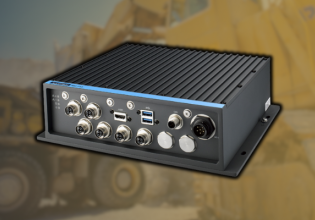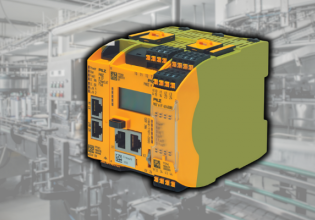Level Sensors and Their Use in Level Measurement and Monitoring
Level sensors are used to measure the level of a substance, usually a liquid or granular material, in a container. Different types of level sensors include capacitive, ultrasonic, acoustic, and radar.
See Our Previous Articles on Industrial Sensors:
- Lasers for Sensing and Object Detecting
- Infrared Sensors for Automation
- Temperature Sensors and Their Uses
- Magnetic and Inductive Sensing
- Pressure Sensor Fundamentals and Types
Level sensors are devices that can measure the level of a substance in a container, typically liquids or granular materials. The output of these sensors is normally a distance quantity that estimates the level in relationship to the container dimensions. The resulting distance can then be converted to volumetric values based on the same tank dimensions
There are different types of level sensors available, each with its own unique features and working principles.

Figure 1. Vertical storage vessels used in the oil industry. Image used courtesy of Hi-Sea Marine
In this article, we will explore the working principles of four types of level sensors and some of their applications: capacitive level sensors, ultrasonic level sensors, acoustic level sensors, and radar time domain reflectometers.
Capacitive Level Sensor
Capacitive level sensors work on the principle of electrical capacitance, which is the ability of a material to store an electric charge. These sensors measure the change in capacitance caused by the presence or absence of a substance in a container.
When a conductive probe is inserted into a container, it forms a capacitor with the container wall. When the container is empty, the capacitance is low. When the container is filled with the substance, the capacitance increases. This change in capacitance is used to determine the level of the substance in the container.

Figure 2. Representation of a capacitive level sensor submerged in a liquid. Image used courtesy of Rochester Sensors
Capacitive level sensors are suitable for use with liquids, powders, and granular materials. They are particularly useful in applications where the substance being measured is conductive or has a high dielectric constant. Capacitive level sensors are also unaffected by changes in temperature and pressure. However, they can be affected by buildup or scaling on the probe, which can cause errors in the readings, although relatively minimal.
Ultrasonic Sensor
Sound waves are the working principle behind ultrasonic level sensors. In particular, they use high-frequency sound waves to determine the distance between the sensor and the substance being measured.
A transducer sends out a sound wave, which bounces off the surface of the substance and returns to the sensor. The time it takes for the sound wave to travel to the substance and back is used to calculate the distance between the sensor and the substance.

Figure 3. Ultrasonic level sensors mounted atop a water tank. Image used courtesy of Flowline
Ultrasonic level sensors are well suited in applications where the substance being measured is not conductive or has a low dielectric constant, complementing capacitive level sensors.
However, like the capacitive sensors, ultrasonic level sensors keep a good performance level even under changes in temperature and pressure. On the downside, they can be negatively affected by the presence of foam or vapors, which can interfere with the sound wave and cause errors in the readings.
Acoustic Sensor
Acoustic level sensors employ low-frequency sound waves for the same purpose of detecting substance level within a container. To operate, the sensor sends out a low-frequency sound wave that travels through the liquid and bounces back from the bottom of the container. The total time it takes for the signal to return to the sensor is then used to calculate the level.

Figure 4. A diagram of an acoustic level sensor. Image used courtesy of Direct Industry
These sensors are important tools to measure depth and level in containers where viscous materials and suspended solids are stored. One factor that can produce measurement errors are air bubbles in the container that could interfere with the sound wave.
Time-Domain Reflectometer (TDR) Sensor
TDR sensors employ radar waves to determine the distance between sensor and substance measured. Radar waves are a form of high-frequency electromagnetic radiation generated by a transmitter device.
Radar waves can provide information about distance, angle, and velocity of objects detected. In this particular application, radar waves simply provide a distance quantity. These sensors are useful in applications where the substance measured has a low dielectric constant or is very opaque.
Other Level Sensor Types
In addition to the four sensor types discussed before, other level sensors available are: optical, vibrating, and floating.
A vibrating level sensor uses a vibrating probe submerged in the container. As the level of liquid in the container changes, so does the frequency of the vibration. These changes in frequency are calibrated and converted to a level quantity.
The floating level sensor is perhaps the most simple and they are also considered very reliable. A floating device floats over the substance in the container and provides an output based on magnetic, pneumatic, or optical devices. They are helpful in applications where the container is very large and the previously discussed methods would not be practical.
Sensors in Automation
In the next article in our series, we will take a closer look at flow rate sensors and the types used in industrial automation.






